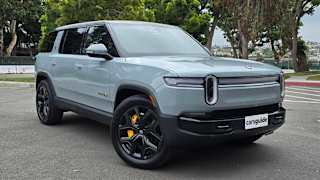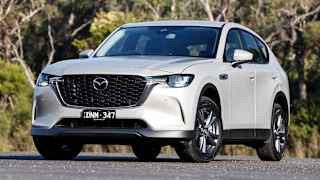We were fortunate enough to drive all three Trofeo models - Ghibli, Levante and Quattroporte - on the track at Sydney Motorsport Park, which really is the only way to fully appreciate vehicles with Ferrari V8 engines, 433kW and rear-wheel drive.
Maserati is keen to point out that other premium brands don’t offer that kind of grunt in their rear-drive cars, indeed most of them are going all-wheel drive, and that level of playfulness is a real USP, it believes.
The thing is, the company also acknowledges that its buyers are older, wiser and wealthier types moving up from the German brands.
The Trofeo range, in particular, then, is a real niche within a niche. I picture Maserati buyers as being slightly sedate yet stylish. Fans of the nicer things in life, but not flashy, or thrashy, about the cars they drive.
And yet, unlike other Maseratis, the Trofeos are flame-spitting beasts that sound like Game of Thrones dragons. Clearly there are people who like their classy Italian saloons to be insanely fast and track ready. And hooray for them, because as weird as it seems to flog a car like this so hard, the Trofeo Ghibli was well and truly up for it.
It’s also the pick of the litter, being less SUV like than the SUV Levante, and less stupidly long and heavy than the Quattroporte.
Its shorter wheelbase and lighter weight make it the most fun and light on its feet when being thrown around. We hit an easy 235km/h on the front straight before hurling into Turn One well north of 160km/h, and the Ghibli just held on tight before using its torque to hurl it at the next bend.
It sounds, as I’ve said, amazing, but it’s worth saying again because it’s a real Maserati (or Ferrari, really) advantage of choosing this car.
The brakes are also up to the task of repeated track-hard stops, the steering is lighter and less talkative than a Ferrari perhaps, but still excellent, and the whole Trofeo Ghibli experience is best described, on circuit, as being better than you would possibly imagine.
Out on the road, you don’t have to put up with the firm ride that pressing the Corsa button compels, and the Ghibli reverts to its smooth, cruiser persona - while still looking sporty as hell.
The only letdown is the seats, which are a little on the firm side, but everything else about the cabin is so luxe you almost forgive it.
While this car makes no sense to me, it obviously excites enough people for Maserati to make a business case, and charge $265,000 for the Trofeo Ghibli. Good luck to them, I say.









































